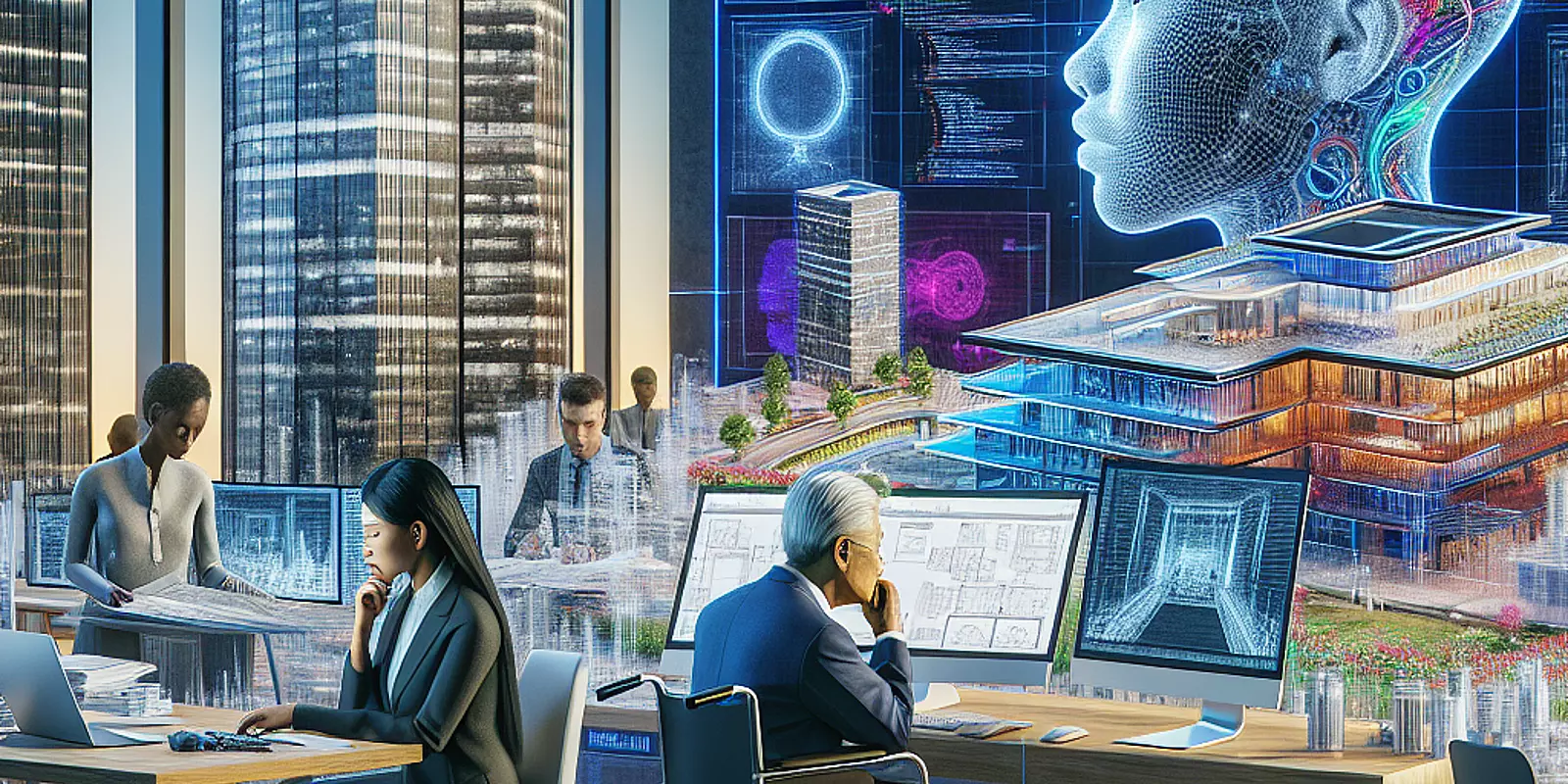
The architectural visualization industry is witnessing a remarkable transformation, largely powered by the rapid advancement of artificial intelligence (AI). As this technology evolves, it presents an unprecedented opportunity for architects and designers to elevate their craft, streamline workflows, and enhance creative expression. In this blog post, we’ll explore how AI is shaping architectural visualization, the current trends in technology, the benefits it brings, the challenges we face, and how professionals can prepare for this exciting future.
At its core, AI is redefining the design process in architectural visualization. By automating mundane tasks such as modeling and texture application, AI allows architects to focus more on creative aspects. Generative design algorithms, for example, can explore numerous design permutations within moments, providing a plethora of innovative options that traditional methods might not yield. Additionally, AI-driven rendering technologies are pushing the boundaries of realism, producing photorealistic images and animations much faster than conventional approaches. This not only enhances the quality of visualizations but also democratizes access to advanced tools, benefiting smaller firms and independent designers.
Several trends highlight the significant impact of AI on architectural visualization:
Machine Learning Automation - AI algorithms are optimizing workflows by automating routine tasks, freeing architects to engage in more strategic design elements.
Generative Design - This technique allows for rapid exploration of diverse design options, accelerating the creative process and encouraging innovative solutions.
Enhanced Rendering Techniques - AI is revolutionizing rendering, enabling real-time ray tracing and high-fidelity simulations of natural lighting and textures.
Collaboration Tools - AI-powered platforms are facilitating seamless collaboration among multidisciplinary teams, optimizing project management and communication.
As we adapt to these trends together, it's clear that AI will continue to expand its role, introducing even more sophisticated tools to enhance both creativity and efficiency.
The integration of AI in architectural visualization brings various advantages:
Increased Efficiency: AI streamlines processes, reducing time spent on repetitive tasks and enhancing overall productivity.
Enhanced Creativity: Generative design tools provide architects with a wide array of design alternatives, spurring creativity and innovation.
Improved Decision-Making: AI’s ability to analyze vast datasets enables smarter design choices regarding energy efficiency, structural integrity, and more.
Visual Storytelling: Sophisticated rendering tools enhance client communication, allowing stakeholders to visualize the final product with stunning realism.
Embracing these benefits is no longer optional, but essential for professionals aiming to stay competitive.
However, the rise of AI in architectural visualization also comes with challenges. There’s a risk of over-reliance on AI tools, potentially overshadowing the artistic vision of human designers. Ethical concerns around data privacy, job displacement, and accountability also necessitate careful consideration. For example, as AI takes on more tasks, professionals must learn to work alongside these technologies rather than be replaced by them. Fostering a balance where AI serves as an assistant to human creativity will be crucial.
To navigate the AI revolution effectively, architectural firms must prepare their teams for this transition. This includes:
Skills Assessment: Conducting a thorough audit of current capabilities to identify areas for improvement.
Training Programs: Implementing learning initiatives focused on AI technologies, allowing team members to enhance their skill sets.
Workflow Adaptation: Evaluating existing processes to integrate AI tools, thus streamlining operations.
Promoting a Collaborative Culture: Encouraging a mindset that views AI as a partner in creativity, rather than a competitor.
Setting Realistic Goals: Establishing achievable milestones to track progress and maintain motivation throughout the integration process.
Real-world examples illustrate the transformative power of AI. A New York architecture firm leveraged AI to optimize urban planning layouts, generating multiple design options quickly while saving substantial time. A Tokyo boutique studio capitalized on machine learning to enhance rendering processes, producing photorealistic visualizations that captured unparalleled details. Additionally, a collaborative project between an architecture school and a tech company demonstrated how AI could predict environmental impacts, guiding sustainable design.
These case studies highlight that AI is not just a tool but a vital driver of innovation.
Looking ahead, we can anticipate several exciting trends in the field of architectural visualization driven by AI, including:
AI-Driven Design: Increased reliance on AI for generating creative design solutions efficiently.
Advanced Rendering Techniques: Continued improvements in real-time rendering capabilities, enhancing client presentations.
Predictive Analytics: Greater access to tools that forecast project outcomes, supporting informed decision-making.
AR/VR Integration: Enhanced immersive experiences through AI, facilitating better client engagement.
Workflow Automation: Ongoing optimization of processes, allowing for higher productivity.
In conclusion, the AI revolution in architectural visualization presents both incredible opportunities and challenges. To thrive in this new era, architects and designers must embrace AI not merely as a tool but as an essential collaborator in creating meaningful and innovative designs. Preparing teams for integration, addressing ethical concerns, and staying abreast of technological advancements will be crucial for maintaining a competitive edge.
As we prepare for the future, let’s welcome AI with open minds and innovative spirits, ready to unlock the full potential of architectural visualization. The journey ahead is ripe with possibilities—let’s embark on it together!